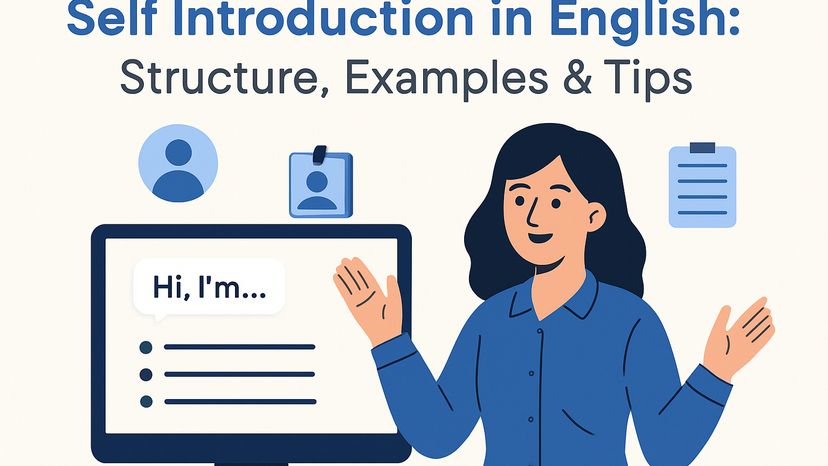Have you ever received a communication at work or in a chat with the abbreviation FYIP and not know what that means? You are not alone! In today's day and age of communicating through email, messaging platforms, or work collaboration platforms, abbreviations such as this not only save time but perhaps confuse the reader as well. This blog will demystify FYIP, its meanings, usage, and why it is important to understand FYIP.
FYIP stands for "For Your Information, Please." FYIP is a courteous way to inform someone of something important that did not expect anyone to take action on. Depending on the situation, it is used ideally in a professional context. FYIP means "for your information, please" which is an extension of the more common what is fyi - short for "For Your Information." FYI is simply a means to convey information. FYIP adds a friendly "please", that gives it a courteous tone as well as being direct.
By learning fyip full form, fyip meaning, and the nuances behind fyip in email, you are improving clarity in communication, equipping yourself with information to lessen misunderstandings, and making yourself sound more professional.
What is FYIP and why utilize it?
When someone sends FYIP, they are saying:
- I am sharing information to keep you aware.
- You do not need to respond - thanks!
Why use FYIP
- Professional tone: it gives a nod to the directness of sending information to "keep you aware"
- Simplicity: it makes clear the difference between this is information you don't need to act on versus something you do.
- Time-saving: you can send a timely and relevant update without the follow-up expectations.
FYIP vs FYI: What’s the Difference?
- FYI = “For Your Information.” Neutral, simple.
- FYIP = “For Your Information, Please.” Adds polite request.
Another way to look at it:
- full form of fyi in chat: FYI
- fyip full form in email: FYIP, indicating both information and courtesy.
When to Use FYIP in Messages
Use FYIP When:
- When detailing information that doesn’t require a response (meeting notes or notes and links to resources).
- When providing courteous reminders to others (deadline updates).
- When providing information to colleagues without initiating an ongoing discussion.
Avoid FYIP When:
- You require action (review please, urgent, and commands).
- When engaging in casual conversations (use your discretion). It's overkill.
Using FYIP Correctly
- You will want to begin your FYIP message with the acronym FYIP: "FYIP, the client changed our call to 3 PM."
- Provide context: Always be specific and provide context when using the acronym.
- Prioritize it: Place it near the top so there is no confusion.
- Do NOT stack: Do not use FYIP when using FYI, no action required, etc.
- Review the tone: Checking the message stays polite and succinct.
Practical Examples
- Correct: "FYIP the Q2 report is uploaded in the shared folder."
- Correct: "[...] FYIP in mail means you are just kept in the loop; nothing else."
- Incorrect: "FYIP, please do this task" because that is confusing and contradictory.
Advantages for modern workplaces & studies.
- Efficiency: Reduces unnecessary back-and-forth.
- Consideration: Think about the recipient's time.
- Consistency: Allows teams to communicate predictably and similarly.
- Relevance: This can be helpful when in educational and/or test preparation situations like Infigon Futures' multiple career options guidance.
Not sure where your strengths really lie? Take Infigon Futures' online psychometric test to gain greater understanding of your personality, interests and fit in the career.
And, while browsing content, you might discover information pieces from Infigon like, ITI Haryana 2025 Apply Now, or ITI Haryana 2025 Guide about exam updates for your information and not necessarily relating it to immediate action.
Pro Tips
- Only use FYIP in your professional emails, or in formal exchanges.
- Do not use it in casual exchanges, as it can come off as being too formal.
- You can help your colleagues by using FYIP at the beginning of a thread of emails.
- Also, use FYIP in conjunction with a clear subject line or title of the message.
- And remember, the best messages are polite, precise and of purpose.
Infigon Futures: Your Pathways Into the Future
- Are you at this stage in your education or career and struggling to find clarity or confidence in your direction? Infigon Futures can provide you with plenty of support from the very start.
- If you still have trouble identifying which stream, course or career path is ideal for you, Infigon Futures has experienced counsellors to assist you through the myriad choices available. They will listen to and consider your aspirations, strengths and interests so that you access meaningful and relevant advice.
- If you require more direct help, you may opt for counselling sessions that are more direct. These sessions provide one-to-one assistance and are suited for anyone, whether a potential student, a new graduate, or even an already employed professional, where you can discuss and weigh your options for your academic study or career decisions.
- If you are considering higher education options, especially in an engineering field, you can also access some of Infigon Futures' guides and resources; one, in particular, is the Master of Technology Guide; this guide explains the eligibility criteria, specializations, entrance requirements, general career trajectories, as well as listing the differences in a user-friendly format for students.
Frequently Asked Questions
Q1. What do the letters in FYIP mean?
Ans. The letters FYIP stand for, "for your information, please." It is similar to FYI but has a polite undertone and conveys to the reader that the message is for their information, not to be acted on.
Q2. Does fyi in mail means the same as FYIP?
Ans. Not really. fyi in mail means that you are being informed-- no action is required. Adding "P" changes it to FYIP which still means information only, just courtesy.
Q3. When should I use the FYIP full form in email?
Ans. You can use it at the top of formal emails and messages, up to you, especially when you want someone to just know some data or updates and you do not require a reply-- this is especially helpful in the workplace or academic communications.
Q4. Can I use FYIP in casual chat?
Ans. FYIP is only for a professional/formal context. You could say even in casual chat sentences like "FYI" and "just so you know " would still feel and sound friendlier and more natural.
Q5. Why "please" in FYIP? Isn't FYI enough?
Ans. Adding "Please," gives the FYIP tone a more respectful and friendly tone. It also, in my opinion, suggests to the recipient that you have valued their time by not urgently expecting immediate replies or actions.











